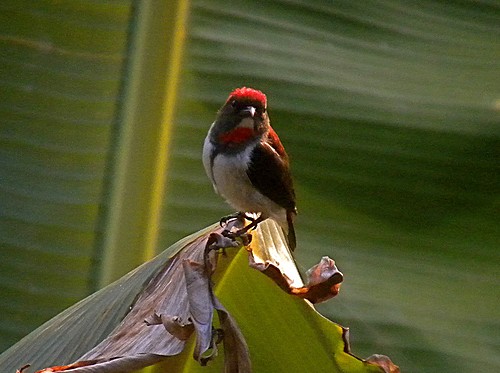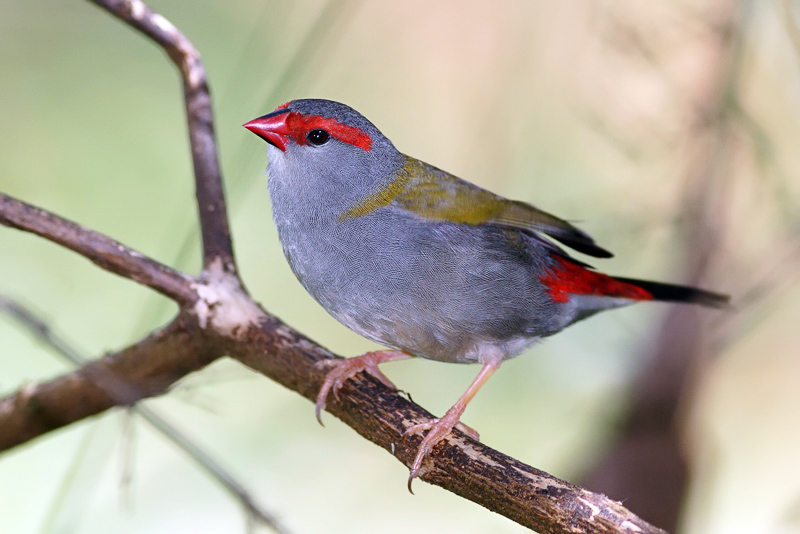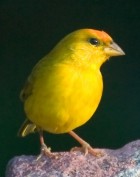
Parmoptila rubrifrons
SUBFAMILY
Estrildinae
TAXONOMY
Pholidornis rubrifrons Sharpe and Ussher, 1872
OTHER COMMON NAMES
English: Jameson’s antpecker, red-fronted antpecker; French:
Parmoptile а front rouge; German: Ameisenpicker; Spanish:
Pinzуn Hormiguero de Jameson.
PHYSICAL CHARACTERISTICS
3.9–4.3 in (10–11 cm). Similar to warblers, with which they
were previously classified. Sexually dimorphic with males having
a red forehead and cinnamon-brown underparts; females
lack the red forehead and have spotted underparts. Juveniles
are similar to adult males but lack the red forehead.
DISTRIBUTION
Two populations: one in Liberia and southwestern Cфte
d’Ivoire and one in northern Democratic Republic of Congo,
eastern Congo, and western Uganda.
HABITAT
Inhabits forest edges and scrub, usually low to the ground.
BEHAVIOR
Found at mid-level or near the ground in pairs, small groups,
or sometimes mixed-species groups. The voice of this secretive
species has not been recorded.
FEEDING ECOLOGY AND DIET
A longer more slender bill than that of most estrildids reflects
this species’ more insectivorous diet of mostly ants, including
their larvae and pupae. This species, along with the closelyrelated
flowerpecker weaver-finch (Parmoptila woodhousei),
possesses a brush-like tongue which is believed to be an adaptation
to a diet of ants. When searching for food, this species
examines both live and dead leaves.
REPRODUCTIVE BIOLOGY
As for negro-finches, the nesting
BEHAVIOR
and the nestlings’
mouth patterns of P. woodhousei are what convinced taxonomists
that the flower-peckers are indeed estrildids, albeit aberrant
examples. However, the nest and nestlings of P. rubrifrons
have not been found or described.
CONSERVATION STATUS
CITES: Appendix III. Not considered threatened by the IUCN.
SIGNIFICANCE TO HUMANS
None known.
Other popular Animals
Photo Gallery of - Red-fronted flowerpecker weaver-finch




 Animalia Life
Animalia Life